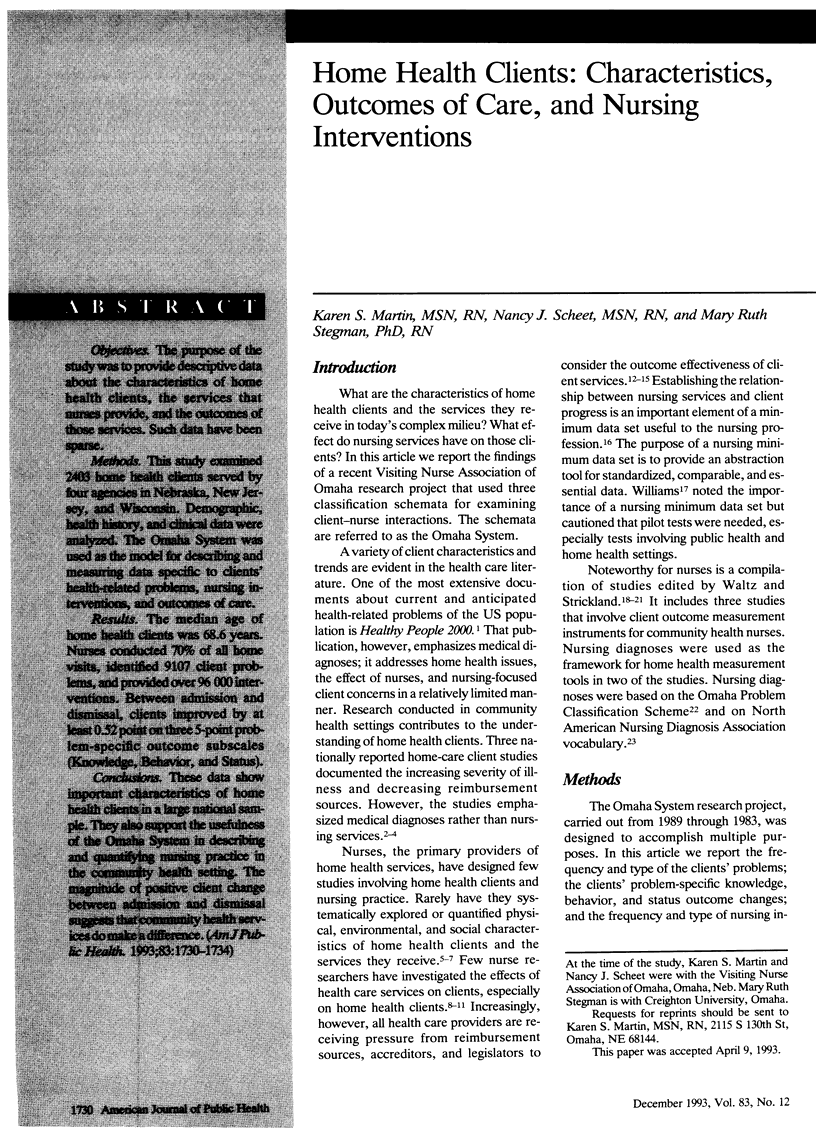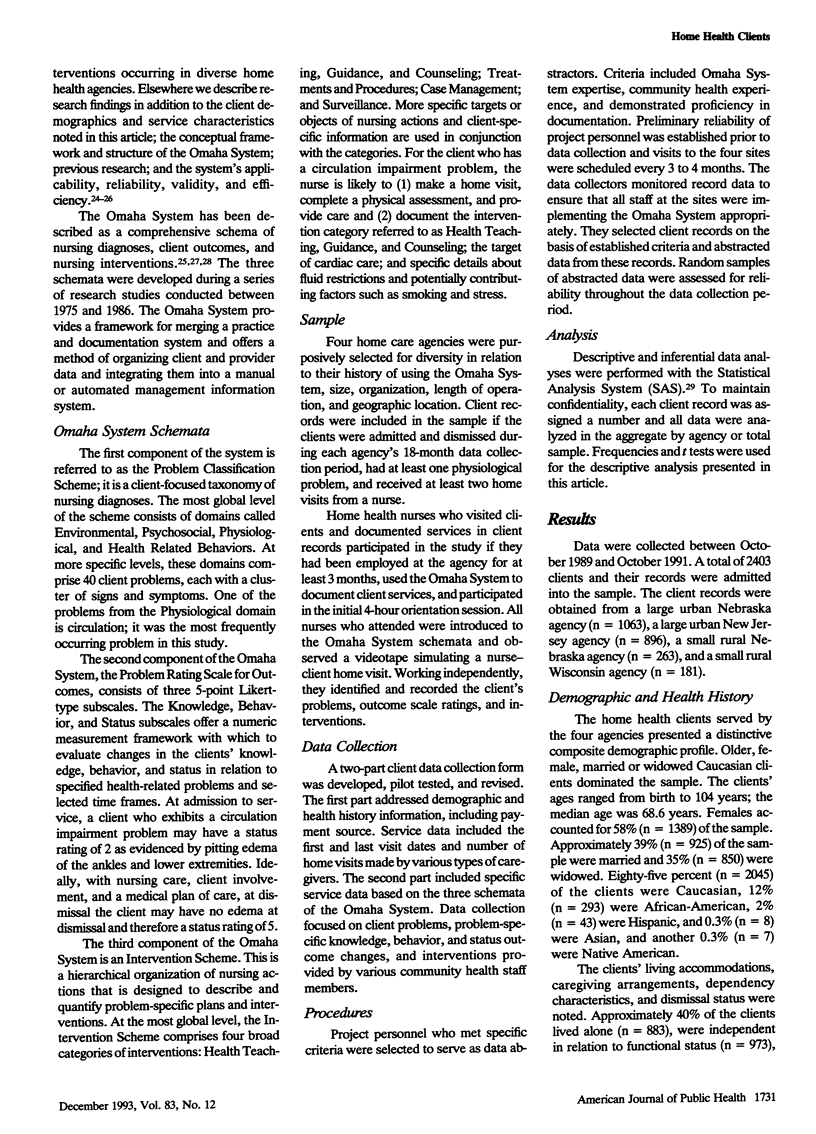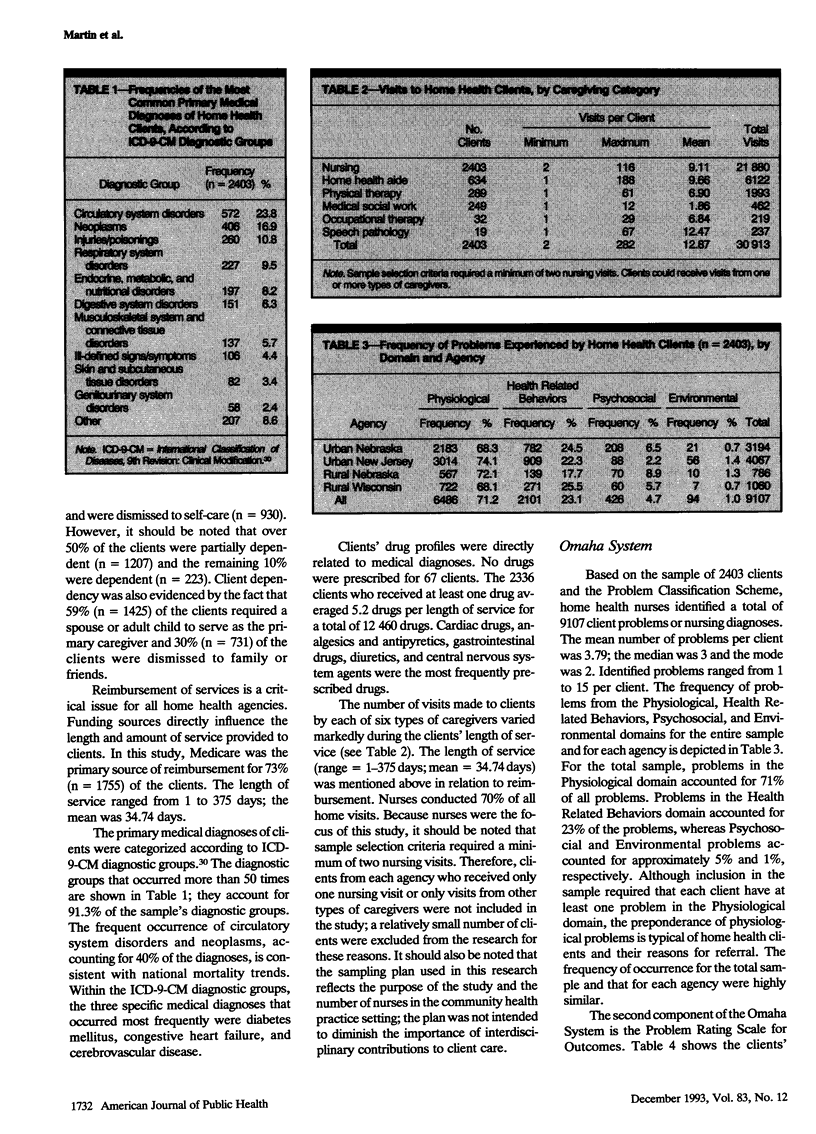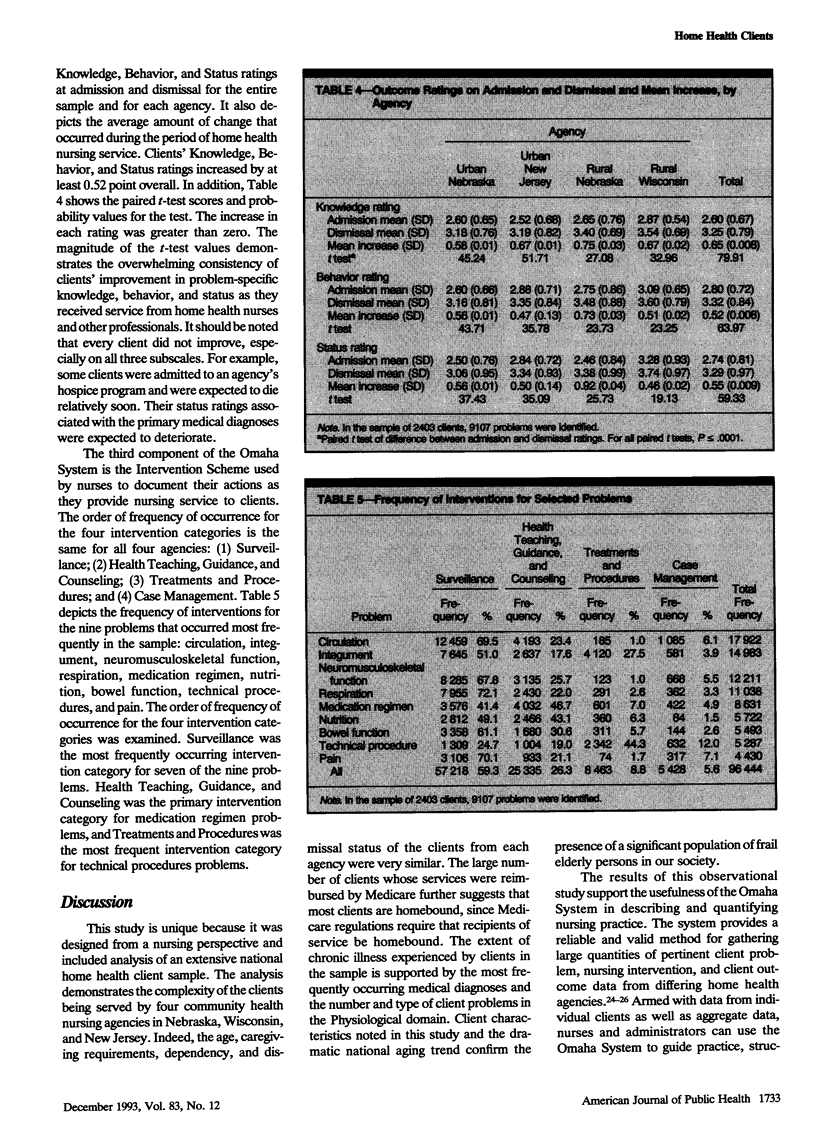Abstract
OBJECTIVES. The purpose of the study was to provide descriptive data about the characteristics of home health clients, the services that nurses provide, and the outcomes of those services. Such data have been sparse. METHODS. This study examined 2403 home health clients served by four agencies in Nebraska, New Jersey, and Wisconsin. Demographic, health history, and clinical data were analyzed. The Omaha System was used as the model for describing and measuring data specific to clients' health-related problems, nursing interventions, and outcomes of care. RESULTS. The median age of home health clients was 68.6 years. Nurses conducted 70% of all home visits, identified 9107 client problems, and provided over 96,000 interventions. Between admission and dismissal, clients improved by at least 0.52 point on three 5-point problem-specific outcome subscales (Knowledge, Behavior, and Status). CONCLUSIONS. These data show important characteristics of home health clients in a large national sample. They also support the usefulness of the Omaha System in describing and quantifying nursing practice in the community health setting. The magnitude of positive client change between admission and dismissal suggests that community health services do make a difference.
Full text
PDF




Selected References
These references are in PubMed. This may not be the complete list of references from this article.
- Blank J. J., Clark L., Longman A. J., Atwood J. R. Perceived home care needs of cancer patients and their caregivers. Cancer Nurs. 1989 Apr;12(2):78–84. [PubMed] [Google Scholar]
- Greenfield S. The state of outcome research: are we on target? N Engl J Med. 1989 Apr 27;320(17):1142–1143. doi: 10.1056/NEJM198904273201710. [DOI] [PubMed] [Google Scholar]
- Handy C. M. Home care of patients with technically complex nursing needs. High-technology home care. Nurs Clin North Am. 1988 Jun;23(2):315–328. [PubMed] [Google Scholar]
- Martin K., Leak G., Aden C. The Omaha System. A research-based model for decision making. J Nurs Adm. 1992 Nov;22(11):47–52. [PubMed] [Google Scholar]
- Martin K. Research in home care. Nurs Clin North Am. 1988 Jun;23(2):373–385. [PubMed] [Google Scholar]
- Moritz P. Innovative nursing practice models and patient outcomes. Nurs Outlook. 1991 May-Jun;39(3):111–114. [PubMed] [Google Scholar]
- O'Neill C., Sorensen E. S. Home care of the elderly: a family perspective. ANS Adv Nurs Sci. 1991 Jun;13(4):28–37. doi: 10.1097/00012272-199106000-00005. [DOI] [PubMed] [Google Scholar]
- Phillips E. K., Fisher M. E., MacMillan-Scattergood D., Baglioni A. J., Jr, Torner J. C. Home health care: who's where? Am J Public Health. 1987 Jun;77(6):733–734. doi: 10.2105/ajph.77.6.733. [DOI] [PMC free article] [PubMed] [Google Scholar]
- Werley H. H., Devine E. C., Zorn C. R., Ryan P., Westra B. L. The Nursing Minimum Data Set: abstraction tool for standardized, comparable, essential data. Am J Public Health. 1991 Apr;81(4):421–426. doi: 10.2105/ajph.81.4.421. [DOI] [PMC free article] [PubMed] [Google Scholar]
- Williams B. C., Phillips E. K., Torner J. C., Irvine A. A. Predicting utilization of home health resources. Important data from routinely collected information. Med Care. 1990 May;28(5):379–391. doi: 10.1097/00005650-199005000-00001. [DOI] [PubMed] [Google Scholar]
- Williams C. A. The Nursing Minimum Data Set: a major priority for public health nursing but not a panacea. Am J Public Health. 1991 Apr;81(4):413–414. doi: 10.2105/ajph.81.4.413. [DOI] [PMC free article] [PubMed] [Google Scholar]


